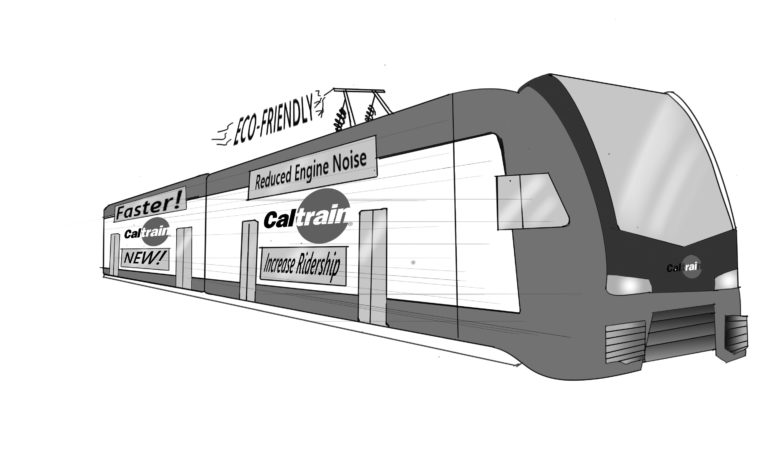

The California commuter train line that has almost 60,000 riders on the average weekday, and currently runs all of its vehicles on diesel fuel — an energy source that is a harmful pollutant. The $2.21 billion renovation project is scheduled to be operational in 2021 and finished system-wide by 2040. According to Caltrain’s website, “The Caltrain Modernization Program (CalMod) will provide more service to more riders, cut air pollution by 97 percent, increase operating performance and reliability and take more cars off the region’s congested roads.” The CalMod program will start by electrifying the train corridor between San Francisco and San Jose and replace the current diesel trains with electric ones.
“Trains have a lower per-person carbon emission rate than cars,” said AP Environmental Science teacher Jessica Valera. “They are considered more green — as long as the trains are traveling full of riders.”
While diesel trains are generally better for the environment than cars, they still release pollutants that harm air quality. This modernization aims to benefit the environment even more by eliminating the current use of diesel fuel, a pollutant of water, soil and air, thus decreasing the production of carbon and nitrogen dioxides
.
In addition to using cleaner energy, Caltrain claims that their new system will bring in more riders. The new, more-frequent trains will be able to travel more quickly between stops and hold more passengers.
English teacher Dena Johnson recalls voting in favor of the program’s establishment when it was on the ballot.
“I do think they should switch [to cleaner energy],” she said. “It’s money well spent.”
Health teacher Barbara Beaumont is glad that Caltrain is moving towards more environmentally- friendly methods and tries to do the same in her own life.
“I have a car that doesn’t pollute,” she said. “The diesel is really bad.”
Carbon dioxide is considered to be the pollutant most responsible for global warming. Although living creatures naturally emit the gas, it is considered a pollutant when associated with any activities that involve the burning of fossil fuels.
Because of this, converting trains to electric power reduces those emissions and may help set an example for more electric cars and cleaner transportation methods in the future.
“I would hope [more companies follow Caltrain’s footsteps]” Beaumont said. “I think it’s kind of going that way a lot more with all of the energy efficiency today.”
In addition to decreasing carbon dioxide in the atmosphere, the modernization program will have a significant economical impact through increased ridership of the trains and more reliable energy sources. Switching from fuel to electricity lessens our dependence on foreign oil, and as of now America is the No. 1 importer of foreign oil, bringing in over 13 million barrels every day. Reducing dependence on other countries for oil aids the economy by cutting out the high global oil prices. The CalMod program also states its intention to improve the local economy by creating more regional job positions within the company. The CalMod website claims that almost a hundred direct jobs will become available in the Bay Area within the next few years.
By 2021, the Bay Area should have a fully implemented modernized Caltrain system which will put an end to polluting our air and will have a significant positive impact on the local economy.
Valera hopes that Caltrain is paving the way to a greener society.
“Caltrain is setting an example for other companies,” she said. “By moving towards a more sustainable, cleaner energy alternative to diesel.”
